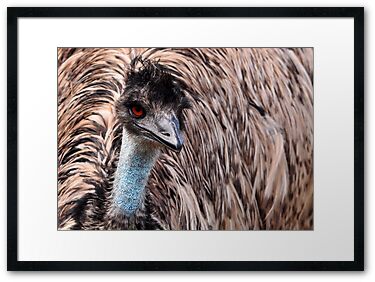EMU
Photographer: Dennis Stewart
Title:Bright Eyes
Decided to take a drive to Glen Rose Texas this morning to visit a place
called the Fossil Rim Wildlife Center of which was founded in 1984 and
is a not-for-profit 501(c)3 company organized specifically to create,
coordinate, fund, educate, research, inform, motivate and conduct
programs and endeavors that will directly or indirectly aid in the
conservation of wildlife with special emphasis on endangered and
threatened species. Most of the 1,100 animals roam freely in large
pastures the size of around 1700 acres.
The Emu is the second largest living flightless bird. The
emu is a prehistoric bird thought to have roamed the outback of
Australia some 80 million years ago. The Aborigines looked upon emu as
the core of their existence. Emu provided them with food, clothing,
shelter and oil used in the treatment of muscle aches, sore joints,
inflammation and swellings. Outlines of emu were chipped into rock
faces. Emu movements are mimed in many Aboriginal dances.
However, they were heavily hunted by farmers because of damaged crops
and the belief that they competed with sheep for grass. The Australian
government has protected the emu since the 1960's.
Emus are monogamous and their courtship is prolonged. The male lines a
shallow depression next to a bush with leaves, grass and bark to make a
nest. The female lays 9 - 12 dark green, eggs weighing 1 to 1.5 lbs
each. Then she defends the nest during the 53 day incubation period,
while the male incubates the clutch without drinking and rarely eating.
Chicks are cream colored with brown stripes and dark dots on their
heads. They leave the nest after 2 - 3 days. The male teaches the chicks
what to eat, how to eat it and where to find it. The male guards the
chicks for up to 18 months.
The feathers have 2 identical shafts with the barbs so widely spaced
that they do not interlock. This gives the emu a rather "shaggy dog"
look.
The emu can run at speeds up to 30 mph by taking strides of 9 ft. or
more. They defend themselves by kicking and ripping with their extremely
powerful feet. When frightened they make a booming call to warn others
that danger is near.
Habitat:
The Emu is common over most of mainland Australia, although it avoids heavily populated areas, dense forest, and arid areas.



No comments:
Post a Comment